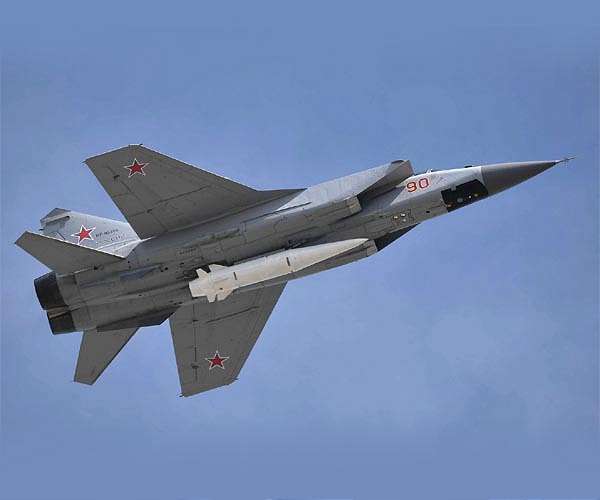
Novel, breakthrough warfighting capabilities discussed by DOD officials (Image Credit: Space war)
Defense Department officials yesterday described current and future game-changing warfare capabilities that will ensure national security for the U.S., allies and partners.
The venue for the discussion was testimony at a Senate Armed Services Subcommittee on Emerging Threats and Capabilities hearing.
The Defense Innovation Unit successfully prototyped synthetic aperture radar satellites, which can see through clouds and at night. These satellites provided the world with imagery of Russian forces in and around Ukraine, enabling the department to predict the invasion and prove undeniably what was happening without revealing classified sources, said Michael Brown, DIU director.
Today, the National Reconnaissance Organization has provided this capability as part of U.S. defense security assistance to Ukraine, he said.
The Defense Advanced Research Projects Agency has been working on some futuristic capabilities that could aid the warfighters in incredible ways.
Stefanie Tompkins, director of DARPA, said her agency is working on a number of projects.
“Imagine a world where soldiers’ basic needs things like food, water, fuel or medicine are made right on the spot from waste material, say from plastic, or even just from the air, completely independent of vulnerable supply chains,” she said.
“Imagine a world where both of our electronics and software are completely secure by design and thus unhackable. Imagine a world in which all of our military systems, which today have a lot of trouble interoperating, can seamlessly communicate and work together … Those are some of the features that DARPA seeks to make real,” she said.
Also, DARPA in partnership with the Air Force, recently completed a second successful flight test of a hypersonic air breathing weapon concept known as HAWC.
“This test set the U.S. record for scramjet endurance and we believe it’s an inflection point on the path to reclaiming U.S. leadership in hypersonic weapons,” Tompkins said.
“I ask you please to remember that some of those will fail. If they don’t, it means we’re not trying hard enough. And we’re not taking enough risk. But some of those will succeed, and in doing so, may fundamentally transform our nation and strengthen our national security,” she added.
Under Secretary of Defense for Research and Engineering Heidi Shyu said: “As we have seen in Ukraine, novel commercial technologies, paired with conventional weapons can change the nature of conflict.
“The department’s processes, ranging from programming to experimentation to collaboration, should be updated to reflect the dynamic landscape today and anticipate the needs of tomorrow. Our nation’s private sector is our competitive advantage, and we must focus on improving how the government and private sector work together.
The forthcoming department’s “National Defense Science and Technology Strategy” will provide guidance to DOD regarding near-term challenges and ensure that the United States remains the global leader in technology far into the future, she said.
Related Links
US Defense Department
The latest in Military Technology for the 21st century at SpaceWar.com
|
|
Tweet |
|
|
|
We need your help. The SpaceDaily news network continues to grow but revenues have never been harder to maintain. With the rise of Ad Blockers, and Facebook – our traditional revenue sources via quality network advertising continues to decline. And unlike so many other news sites, we don’t have a paywall – with those annoying usernames and passwords. Our news coverage takes time and effort to publish 365 days a year. If you find our news sites informative and useful then please consider becoming a regular supporter or for now make a one off contribution. |
||
|
SpaceDaily Contributor $5 Billed Once credit card or paypal |
SpaceDaily Monthly Supporter $5 Billed Monthly paypal only |
|
At Northrop Grumman creativity guides innovation
Annapolis MD (SPX) Apr 05, 2022
Imagine a place where ideas are transformed into advanced operational prototypes years ahead of existing technology. That’s just what happens in Northrop Grumman’s Navy-focused innovation centers, where creativity guides innovation.
Two research and development teams inside the Maritime/Land Systems and Sensors Division support the U.S. Navy: Dolphin Works on the company’s Annapolis, Maryland campus and Dragon Works on the Sunnyvale, California campus. Both teams are focused on advancing and exten … read more









